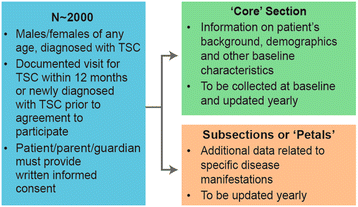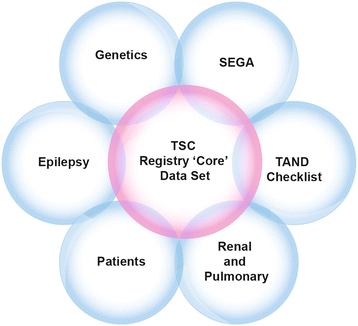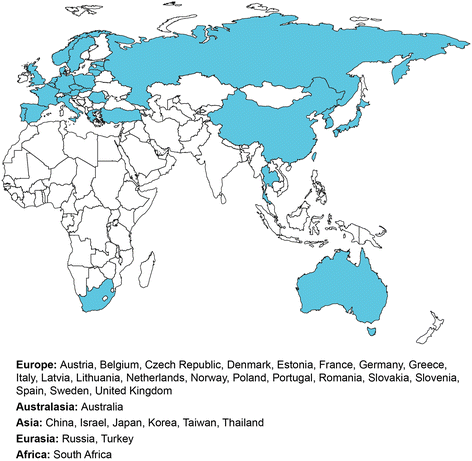TOSCA - first international registry to address knowledge gaps in the natural history and management of tuberous sclerosis complex
- PMID: 25424195
- PMCID: PMC4256743
- DOI: 10.1186/s13023-014-0182-9
TOSCA - first international registry to address knowledge gaps in the natural history and management of tuberous sclerosis complex
Abstract
Background: Tuberous sclerosis complex (TSC) is a rare, multisystem, genetic disorder with an estimated prevalence between 1/6800 and 1/15000. Although recent years have seen huge progress in understanding the pathophysiology and in the management of TSC, several questions remain unanswered. A disease registry could be an effective tool to gain more insights into TSC and thus help in the development of improved management strategies.
Methods: TuberOus SClerosis registry to increase disease Awareness (TOSCA) is a multicentre, international disease registry to assess manifestations, interventions, and outcomes in patients with TSC. Patients of any age diagnosed with TSC, having a documented visit for TSC within the preceding 12 months, or newly diagnosed individuals are eligible. Objectives include mapping the course of TSC manifestations and their effects on prognosis, identifying patients with rare symptoms and co-morbidities, recording interventions and their outcomes, contributing to creation of an evidence-base for disease assessment and therapy, informing further research on TSC, and evaluating the quality of life of patients with TSC. The registry includes a 'core' section and subsections or 'petals'. The 'core' section is designed to record general information on patients' background collected at baseline and updated annually. Subsections will be developed over time to record additional data related to specific disease manifestations and will be updated annually. The registry aimed to enrol approximately 2000 patients from about 250 sites in 31 countries. The initial enrolment period was of 24 months. A follow-up observation period of up to 5 years is planned.
Results: A pre-planned administrative analysis of 'core' data from the first 100 patients was performed to evaluate the feasibility of the registry. Results showed a high degree of accuracy of the data collection procedure. Annual interim analyses are scheduled. Results of first interim analysis will be presented subsequent to data availability in 2014.
Implications: The results of TOSCA will assist in filling the gaps in understanding the natural history of TSC and help in planning better management and surveillance strategies. This large-scale international registry to study TSC could serve as a model to encourage planning of similar registries for other rare diseases.
Figures




References
Publication types
MeSH terms
LinkOut - more resources
Full Text Sources
Other Literature Sources
Medical

